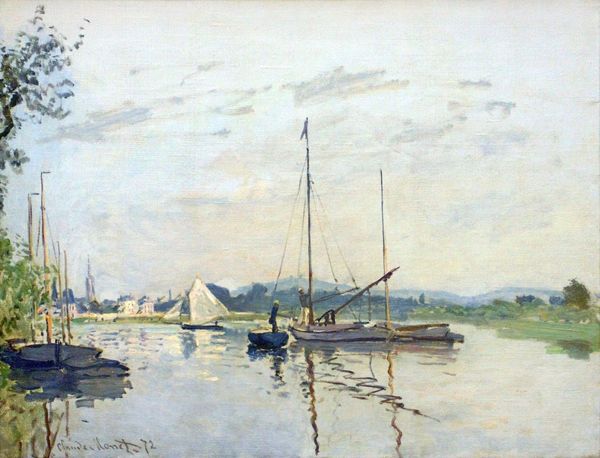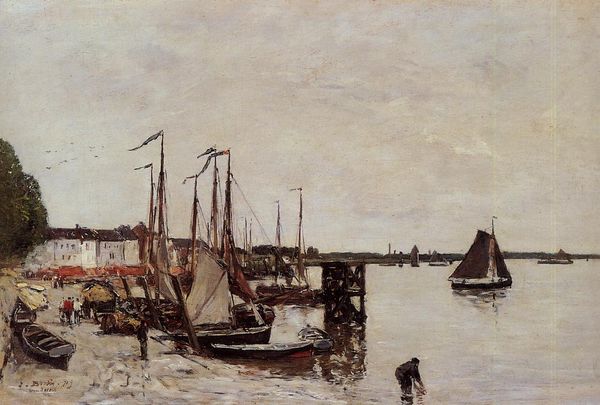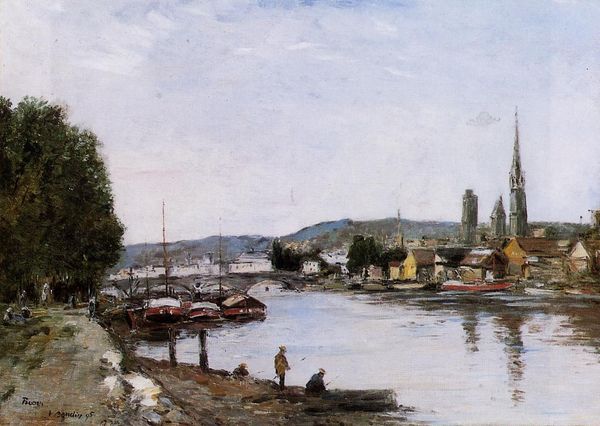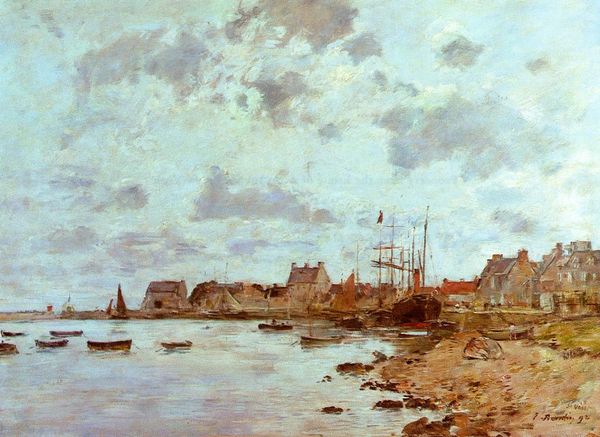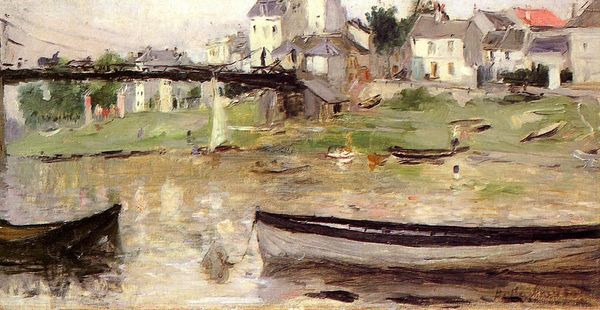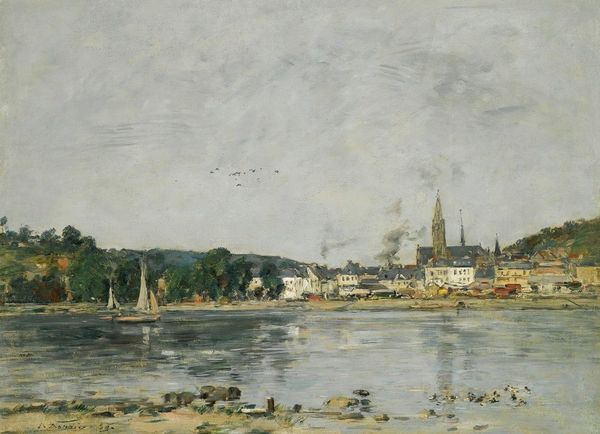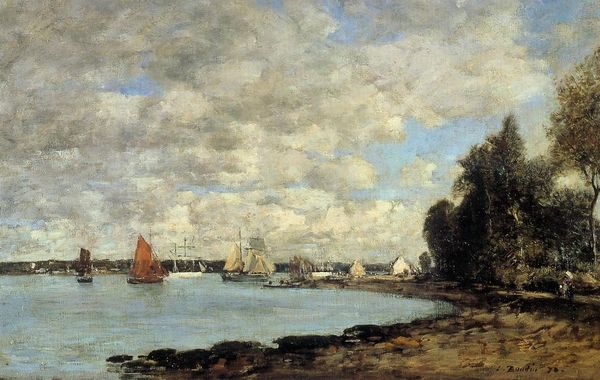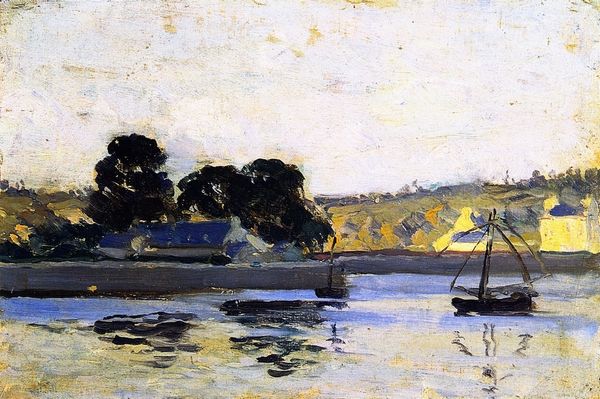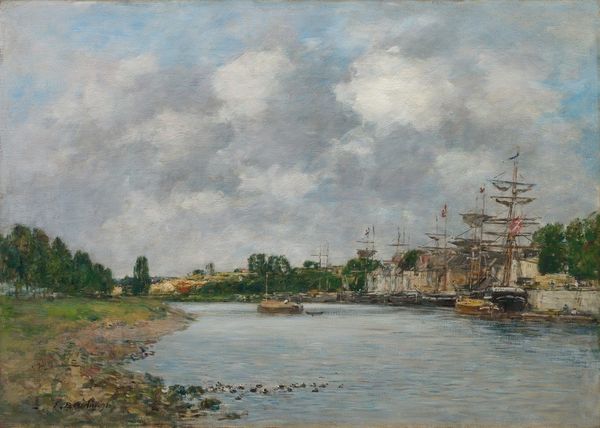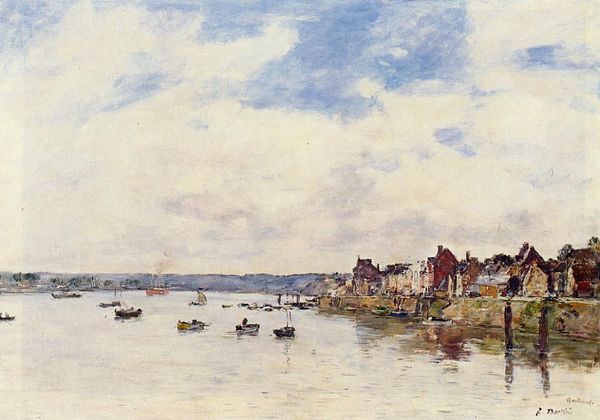
Copyright: Public domain
Curator: Oh, this shimmers with the quietest joy. Like a Sunday afternoon dream. Editor: And quite typical of Eugène Boudin. What you're seeing is "Petit Port de Saint-Jean near Villefranche," created in 1892. He captures a little harbour bathed in that hazy light so specific to the south of France. It’s an oil on canvas, fairly representative of his plein-air approach. Curator: The water… it's like liquid mercury, reflecting those sun-drenched buildings. Makes you wonder about the lives lived behind those walls. Was there laughter, sorrow, everyday moments etched in the shadows? I feel invited to imagine a whole world behind that little scene! Editor: Indeed, it appears serene, doesn't it? However, placing this painting within its context – late 19th-century France, amidst burgeoning industrialisation and colonial expansion, the pursuit of leisure becomes somewhat political. These seaside scenes start reflecting the growing accessibility of travel, particularly for the bourgeoisie. Who had access to such picturesque escapes, and at whose expense? Curator: That’s an interesting point… yet Boudin feels so unlike those flashy Impressionist portrayals of Parisian leisure. There’s a subdued quality here, a quietude. He doesn’t scream “look at me!”, it feels genuine. Like a memory half-remembered, soft around the edges. Editor: Absolutely. And while I agree the energy here is more tranquil, that doesn't diminish its historical implications. The painting inadvertently echoes the era's social stratification. The very act of painting "en plein air" can be seen as a statement, a move away from academic rigidity toward direct engagement with contemporary society and nature. A very privileged kind of engagement. Curator: So even the dreamy is political! It feels like Boudin has spun gold from the everyday… almost without realizing its greater, societal context. Though he did nurture Monet…maybe Monet carried that flame forward into grander statements, I suppose? Editor: Precisely! Think of it as a quiet, gentle prelude to the more overtly radical artistic and social critiques that were brewing. Viewing art this way, as connected threads rather than isolated moments, adds another rich dimension to appreciating a "simple" seaside scene. Curator: Thank you, that certainly made the painting and it’s reflections deepen! Editor: Likewise. It is easy to be lured into the aesthetic delights, isn't it?
Comments
No comments
Be the first to comment and join the conversation on the ultimate creative platform.


